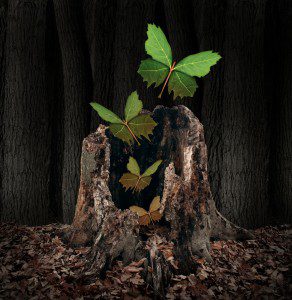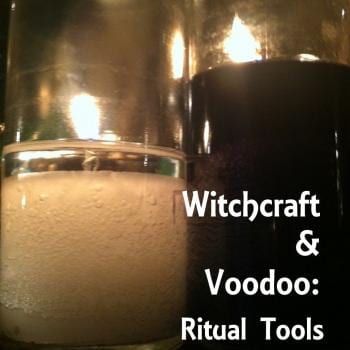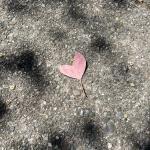
As a young child I didn’t have many friends my age. Maybe for that reason I spent a lot of quality time with nature and the world in which I lived. And I learned that the land and its denizens had voices. You have to use that intuitive knowing to hear them, but those voices are there.
There were three birch trees that grew together on my school playground; my best friend Tamara and I would spend our lunch hour engaging in dialogue and Let’s Pretend with those trees. As a result, they showed us their seasonal changes, their birds, their bugs and their bark. I would spend hours at the shores of Okanagan Lake “petting the water” with a stick and watching the waves go gently in and out; the lake showed me its fishes, its sand and stones, its shellfish and seagulls, and even the bats that flew over it hunting waterbugs at sunset. I used to walk home from school just so that I could detour through the wetlands and study cattails and red-winged blackbirds and cedar waxwings and even a blue heron or two. I climbed Turtle Mountain as a teenager and it told me about its wildlife, about sagebrush and Okanagan bunchgrass, about peregrines and ravens, and about the aboriginal peoples that used to live there. My yard taught me about poplar fuzz and dandelions, about honeybees that would allow themselves to be petted and spiders that spun spectacular webs, and some deeper mysteries, like how clouds migrate through the sky, how the winds of a lake blow in at dawn and out at dusk, and about how lightning can split trees in two.
As I grew into young adulthood I lost the art for a while. The urban world seems so much more interesting in your early twenties. But even then I was called back to the land. I rented houses for their yards; I was attracted to this home, where I’ve been for more than a decade, because it borders protected woodland that gathers around BX Creek, which is fed from Silver Star Mountain. I’ve spent many hours – though not as many as I would like – wandering around in those woods, watching it change with the seasons, watching the moss grow on the cedars, watching the creek transform the landscape completely when it floods each spring.
But because I live here, and have always lived here, I don’t appreciate it as much as I ought to. I learned this because since my partner Jamie moved here from the Lower Mainland, I have watched him making a conscious effort to get to know the local land-wights, and he teaches me that there are still so many things that I do not know.
He keeps asking me questions that I have no answers to and have to research. I didn’t know exactly what our primary crops were – here, in the Okanagan Valley, which is world-famous for its orchards and vineyards! I didn’t know when the lambing or the foaling was; I grew up in the suburbs, not on a farm. I didn’t know where to find the major hiking trails, and though I imparted what I knew of gardening in the Okanagan, I found that there were huge gaps in my knowledge, like when to prune the trees and how to get a good compost going. I didn’t really know when the first birds arrived back from the winter or which ones they were; not specifically anyway.
Because of him I tried to fill the gaps. For instance I was aware that Lammas around here is when all the berries and the apricots ripen, because I keep going away at that time and coming back and I’ve missed it; but which came first, the raspberries or the apricots? (It’s the raspberries, by the way.) I had no real idea of how to get a good compost going here; wood seems to be the only plant life that rots well in our semi-desert climate. So we experimented.
How did I learn these things? Some of them I read about by interpreting statistical data and by finding a great local blog about nature photography and ecology. Others I learned by going with Jamie to the wild places where I live; the nature trails and the back woods, which took me to wetlands and parks and eagle bluffs and lakeshores and cedar woodlands. Still others I learned while I watched Jamie discovering these things as he spent time doing what I used to do as a child; listening to the trees and the water and the sky.
The land-wights told Jamie where to plant the flowers we picked up from the nursery in late May. They told him that the trees needed pruning. They told him that it was unseasonably cold last year and a little on the warm side this year. They told him that the way to make a good compost was to mingle wood shavings and broken stumps and branches in between layers of the other stuff, and cover it over with a blanket of the omni-present leaves of the horse chestnut trees that grow in our yard. Those same horse chestnut trees complained when he decided to try growing a hedge along our fence by piling the leaves and the horse chestnuts there, except for what he was using in our compost. Because one tree was closer to the compost pile than the fence, almost none of its nuts were being planted and it was cross about it.
I spent time just sitting in nature again, or walking without a destination. I learned where the owls and the bats lived; where the squirrels made their homes; where to find the eagle bluffs and the heron nests, and approximately where the local rookery was. I carefully observed the seasonal changes in the climate, the bugs, the flora and the fauna, the weather, the behaviour of people, and observations of the landscape.
This process can also teach you about the flow of energy in the land. The “ley-lines” some people talk about can be found this way, along with the nexus points where they meet; and those places are unusually powerful energetically. One of the reasons I was drawn to the place where I live was that it’s one of those places. You can harness that energy, or choose to protect it against all interference. We had a Beltane gathering here one year and built a spiral on the spot we sensed most strongly.
Some call this process of getting to know the land “deep ecology.” I think it’s a valuable Pagan practice, particularly for those of us with a reverence of nature or an agricultural/folk tradition. Perhaps through my experiences you can find something to help you to make that connection with the spirits of your land.
Some exercises:
- Sit by a body of water and observe its flow and ebb. Listen to how it runs. See if you can get a sense of where it goes and what changes it experiences through the seasons.
- Observe the seasonal cycles of your area. Which are the first of the spring birds to come back? How does the landscape change? What are the major agricultural crops and events in your area; when do you plant what, when are the calves born, what are some of the issues that challenge the local farmers? Even if you live in downtown Toronto, there are farms within 40 km of you.
- Go to a quiet place and lie under a tree, gazing into the branches. The Druids used to gaze at gently blowing oak leaves to seek visions, and watching these rhythms is a form of scrying. While you’re at it, see if you can ground with the earth or the tree roots and ask the tree how it feels and why.
- Make friends with a local tree. Spend at least a good twenty minutes with it, at least once a week, for a whole year. Get to know its spirit. Watch it change, make it offerings, observe the creatures that interact with it (including humans.)
- You can do the above exercise with big rocks or small bodies of water as well.
- If it won’t disrupt the local agrarian cycle, put out bird feeders and watch what happens.
- Go to your local wild places. Find your national parks and your nature trails. Go hiking; observe the flora and fauna and landscape and listen to it. If you are disabled this may be more difficult for you, so go to a park instead if you like; but pick one that is full of greenery and birds so that they can speak to you.
- Spend a year in a serious gardening process. You can even do this if you live in an apartment by keeping flowerbox gardens. Touch dirt, weed, prune, and harvest. It’s amazing how effective a year of this can be for getting in touch with the local spirits and learning their language.
- Some times the land-wights are standoffish or hostile. For instance, there is a little island in my back forty in the creek that I believe belongs to the Fair Folk; there’s a fairy hawthorn and a cedar dryad nearby. There’s a couple of places out in the Kootenays which, even driving along the highway, are confused by non-aboriginals and are faintly hostile. There was no reserve out there so I can’t image there is any direct negative history; they just don’t know how to deal with those of European descent because we look weird and don’t speak the symbolic language of the First Nations that they are familiar with. Respect those places. Stay out of the “stay out” areas; make offerings if it feels appropriate.
- Learn about your local legends and urban legends. Consider how they relate to the legends of your cultural inheritance. North America is a weird place in the spirit-realm sometimes, because imported European entities like Herne and Odin roam the same landscape as Raven and Grandmother Spider. Sometimes they work at cross-purposes to one another. Tread lightly.
- Find a local plant or animal that you identify with. Make a mask to represent it. Wear it, and consider in ritual format how that creature/plant might feel and think about the world in which it lives. Dance it or speak about it. This is even more cool if you can do it with friends.
- Your body has an instinctive need to harmonize with the cycles of the seasons. Not doing so creates unconscious psychic stress. I genuinely believe it’s imprinted in our ancestral memory and our cell-memory. I have a friend who insists that we must harvest something edible with our own hands during the fall season. It can be as simple as wildcrafting herbs or going to an asparagus U-pick. She also claims that in the winter, our instincts demand that we go out somewhere, pick up some wood, and bring it home. Try it and see if you don’t feel less stressed and less depressed the following winter, and whether or not your waistline stays smaller!
- Cloud-watch! Cloud-watching is a process of just sitting and being in nature. Maybe take a notebook and write down anything significant that comes to you.
- As always, it’s not a bad idea to do your best to not screw with the land-wights; so watch your carbon footprint, don’t litter, don’t take things from protected areas like bugs or flowers, and if you make a mess, clean up after yourself. This includes excavation projects and keeping your yard in reasonable order.
You can develop a life-long, intimate relationship with your local land-wights. It’s my belief that doing so makes you happier and healthier and gives you a better quality of life. And certainly it will help you to have a deeper ecological respect for the world around you; which is important to Pagans of many stripes.














